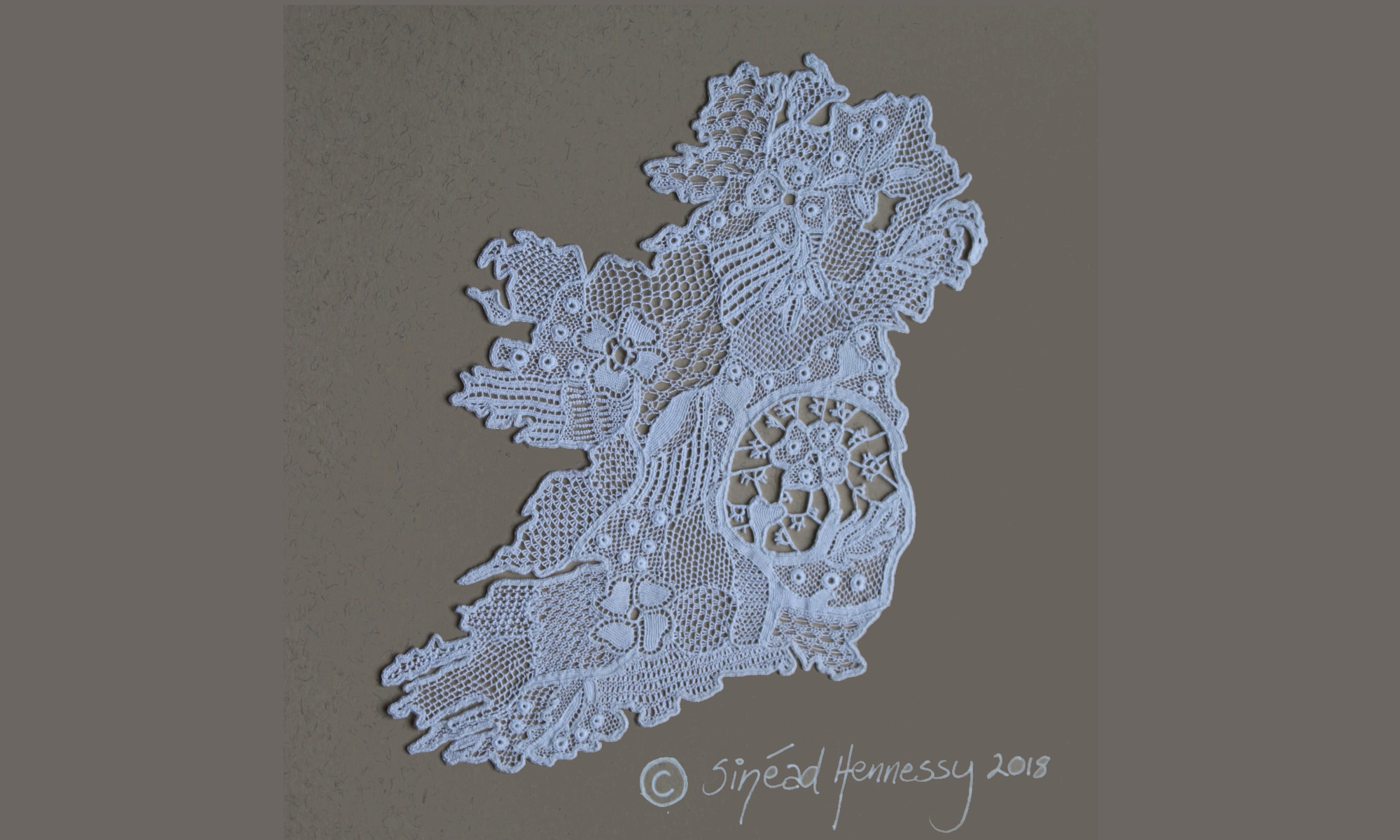5 Jul 2025 – official launch of the Lace & Legacy exhibition in the Armagh County Museum. The exhibition will stay open until 11 Oct 2025 and will host a series of events organised by the South Armagh Lace Collective in collaboration with the Armagh County Museum.
14 Jul 2025 – Gathering of local textile crafts people at Mountmellick Embroidery Museum’s Studio with special guest Mary Elizabeth Barron, Australian lace artist.
19 Jul 2025 – Headford Brackens- Drop-in community engagement workshop with Mary Elizabeth Barron, organised by Headford Lace Project in Headford, co. Galway
20 Jul 2025 – Masterclass with Mary Elizabeth Barron – Large scale bobbin lace making with recycled plastic with Headford Lace Project in Headford, co. Galway
22 Jul 2025 – Talk and pop-up exhibition: Mary Elizabeth Barron – “My Lace Making Journey”, organised by Friends of Lace Limerick in the Limerick Museum
23 Jul 2025 – Limerick lace beginners workshop with Friends of Lace Limerick, followed by visit at the Heritage Centre, Charleville
2 Aug 2025 – Carrickmacross lace workshop, Millenium Court, Armagh
3 Aug 2025 – Borris lacemakers at the Vintage Rally in Kilkenny – A Stitch in Time – Pop-up exhibition
5 Aug 2025 – Opening of the Limerick Museum exhibition: “A Tribute in Thread – Limerick’s Forgotten Lacemakers”, organised as part of the Laces of Ireland project. The exhibition will stay open until the 30th of Aug 2025 inclusive.
6 Aug 2025 – Borris Lacemakers visiting Friends of Lace Limerick
8 Aug 2025 – The Guild of Irish lacemakers is organising two workshops for children at the National Museum of Ireland at Collins Barracks:
- Introduction to Mountmellick Embroidery workshop for children;
- Introduction to Limerick Lace workshop for children
14 Aug 2025 – Opening of the Cork Public Museum Exhibition: “Cork’s Lace Heritage and Beyond: The Story of a Living Tradition”. This exhibition is part of the Laces of Ireland project. The exhibition will stay open until 20 Dec 2025 .
15 Aug 2025 – Friends of Lace Limerick in the Limerick City Library, part of August Craft Month
- Threads of Beauty: A Pop-Up Celebration of Limerick Lace – 10am – 5pm
- Entwined Stories: A Talk on Ireland’s Lace Traditions – 3pm
- Lace in the Library: Meet the Makers – 12pm-3pm
16 Aug 2025 – Friends of Lace Limerick in the Limerick City Library – Laces of Ireland pop-up exhibition as part of Heritage Week
- The Fine Art of Limerick Lace: A Pop-Up Showcase
- Lace Beginnings: Learn the Art of Limerick Lace -10:30am-1pm
- Laced Into the Landscape: Limerick Lace Historic Locations – 2:30pm-3:30pm ; talk by local historian Sharon Slater
16-23 Aug 2025 – Celebrating 20 Years of Traditional Lacemaking in Ireland – exhibition of the Traditional Lacemakers of Ireland in the Cork City Library; closed on Sunday, 17 Aug.
16 Aug 2025 – Lace workshop and a fashion show featuring traditional Irish lace, 11am-3pm, organised by The Traditional Lacemakers of Ireland in Cork City Library
16 Aug-24 Aug 2025 – Irish Crochet Lace Revival Showcase -exhibition of the Irish Crochet Revival Group in the Tallaght Library, Dublin.
21 Aug 2025 – Visit Cork Public Museums New Lace Exhibit & Drop in Talk, 10:30am-12:30pm, organised by the Cork Public Museum in collaboration with the Traditional Lacemakers of Ireland at the Cork Public Museum, Fitzgerald Park
23 Aug.2025 – Meet the Maker Showcase session with the Irish Crochet Revival Group from 10am to 1pm in the Tallaght Library, Dublin.


























































































